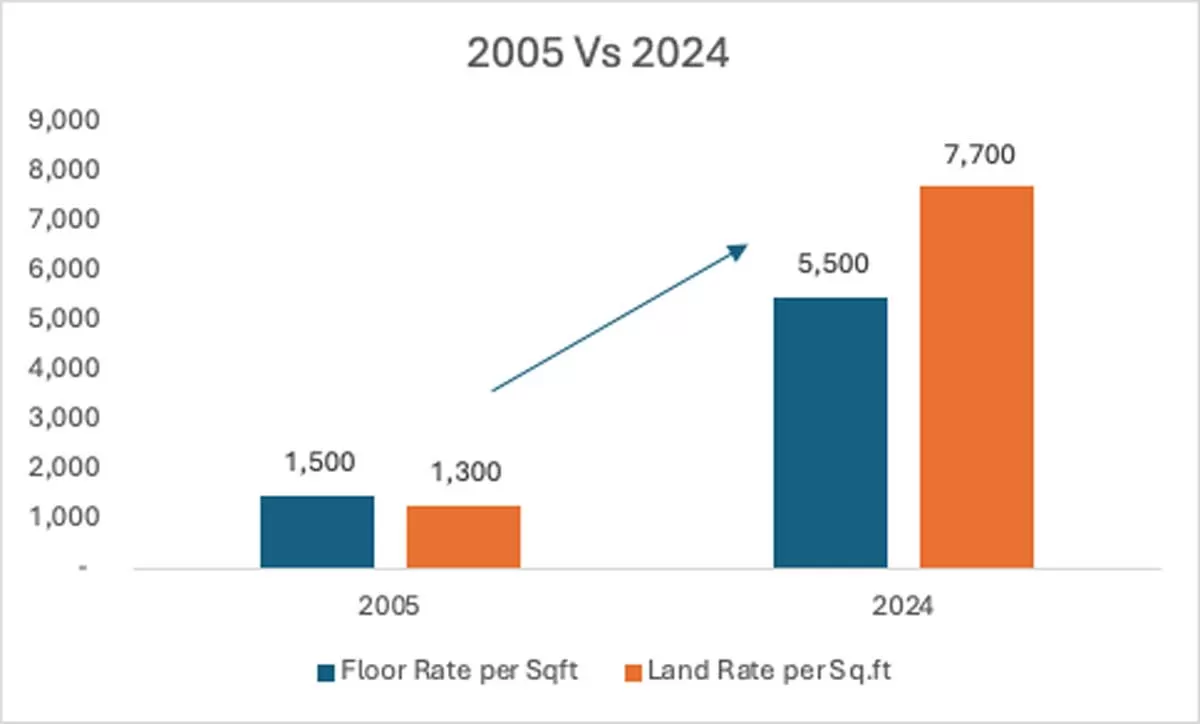Photo courtesy: L&T
With the entire country in a lockdown, all construction work across most of Larsen & Toubro’s (L&T) projects came to a grinding halt. Only a few projects continued, providing essential services like its O&M commitments to keep water infrastructure facilities functioning; at a few other projects, at the behest of the clients involved, India’s largest construction contractor was able to complete some monsoon preparation works. “Today, with India in unlock mode, our concerted efforts are to resume operations and try and make up for lost time,” says SN Subrahmanyan, CEO & Managing Director, L&T. “The fact that labour has gone to their native places and that local labour is expensive is not helping. We had about 230,000 workmen at our various projects when the pandemic broke out. Today, we are down to just about 100,000, so output has reduced to that extent. But we are confident that a reverse migration will soon take place, that labour will return in adequate numbers in the right mindset for projects to start operating at full steam.”
From March 22 almost till the end of April, both tolling operations and construction have been significantly affected from the imposition of lockdowns, initially by the state governments followed by the Centre. “Although construction activities resumed in the fourth week of April, because of the exodus of migrant labour and disruption in supply chains, progress is subdued and has been substantially below optimal levels till now,” shares Yogesh Kumar Jain, Managing Director, PNC Infratech.
The lockdown greatly impacted the production of GR Infraprojects as all its backward integration factories had to be shut immediately. “Factors including supply chain disruption, shortage of subcontractors and materials, and shortage of labour force all have the potential to cause substantial construction delays and project cost overruns into 2021,” notes Ratan Lal Kashyap, Senior Vice President-Procurement, GR Infraprojects (GRIL).
The hard hit
The reduction in investment in the construction industry has had a significant impact on the construction-related gross value added (GVA) and employment sector compared to pre-COVID times.
“As the construction sector is driven by infrastructure projects to a large extent, it is expected to be hit severely by the current levels of uncertainty, dismal business, consumer sentiments, loss of income and diversion of government funds towards COVID-19 management,” says Kashyap. “However, NHAI (National Highways Authority of India) has been positive in accelerating project construction by ensuring timely payments, faster decision-making and dispute resolutions, and regular review of project progress.”
With the pandemic yet to be controlled and eradicated, K Jalandhar Reddy, Executive Director, KNR Constructions, observes, “We may have to wait for at least six months to assess ground realities. Till such time, the inflow of funds to projects may be trickling in.”
“The situation is still fluid and, to that extent, there will be a negative impact on our business,” reasons Subrahmanyan. Currently, roughly 20 per cent of L&T’s projects are from the private sector and the remaining 80 per cent from the Centre, state governments and public-sector enterprises. About 35 per cent of the latter are funded by institutions like the Asian Development Bank (ADB), Japan International Cooperation Agency (JICA), World Bank and the like, which should continue undisturbed. “Rs 15 trillion had been earmarked by the Government for infrastructure development. Although, there will undoubtedly be a dip in this outlay with funds diverted for COVID-19-related initiatives and programmes, we are hopeful that there will still be sizeable funding for infrastructure projects. Obviously, this will also give the economy a huge fillip with more activity, more jobs, more consumption. At the end of the day, the need of the hour is for some really big-ticket projects to see light of day. Countries like China and the US have them; we in India desperately need them, for example in the transportation sector. The state governments are not in very good shape to commit significant expenditure and the private sector has too many stretched balance sheets for comfort; hence, it is really left to the Central Government to think innovatively to create funding for such projects.”
With systematic investments in infrastructure being a national imperative for overall economic growth of the country, Jain believes any short-term downtrend in spending may not have a long-term impact on the project pipeline in the sector. “As there is adequate liquidity available with banks for lending, it is up to government authorities to create an investor-friendly, enabling framework with proactive support and timely decision-making to continue to attract private-sector investments in the infrastructure sector.” As PNC Infratech has recently been awarded three national highway development projects on the hybrid annuity model (HAM) by NHAI for an aggregate bid project cost of over Rs 51 billion, Jain sees a sustainable revenue visibility in the coming years.
Fiscal outlook
The months from November to April are considered to be the golden period of construction and the sector has already lost about two months with activities deferred.
Agreeing that this will definitely have a negative impact on the construction revenues and profitability in the current quarter across the industry, Jain says, “Our company is not an exception.” Given the challenges, PNC Infratech is striving to achieve at least a decent turnover in the current quarter; however, Jain expects this to be sizeably lower than what it would have been in a normal situation.
For Himanshu Chaturvedi, Chief Strategy Officer, Tata Projects, it is still too early to predict revenue expectations for this fiscal at this juncture, but he is confident about the excellent project execution capabilities of Tata Projects.
For Reddy, too, despite the present subdued environment and uncertainty on the longevity of COVID-19, “KNRCL’s strong balance sheet, low debt and good inflow of orders with revenue visibility for three years, coupled with an asset-light strategy, will give an impetus for the growth of the company.”
Kashyap is hopeful for growth in terms of road construction in the current quarter with GRIL’s accurate planning and forecasting.
L&T finished FY2020 with a robust order backlog of Rs 3.03 trillion;despite it being a tough year with a really poor Q4, its orders grew by 9 per cent, revenue by 8 per cent and profits by 7 per cent. “The year 2020 has thrown up several factors that are not in our control,” says Subrahmanyan, adding that capital allocation will be difficult, there is a need to rebuild the economy and there is still fear about the pandemic. “While COVID-19 looped off two straight months, we are heading into the monsoon during which project work is muted. The lack of sufficient labour means that we are still operating only at half throttle, so we do have a lot of catching up to do. It is a tough asking rate and we are aware that a lot of factors will have to fall into place and work in our favour to achieve our targets.” But he concludes saying, “We remain cautiously optimistic that things will turn around—and not only us or our country but the whole world will return to normalcy soon.” We sure hope so!
- SERAPHINA D’SOUZA

















